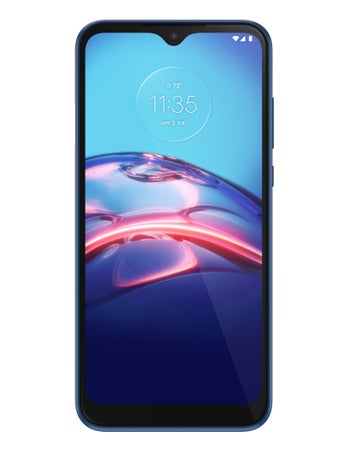Samsung Galaxy J7 (2017) AT&T vs Motorola Moto E (2020) Specs Comparison
Compare mobile phone specifications of up to three devices at once. Our specs comparison tool helps you find and compare the perfect phone for your needs.
|
|
|
| Samsung Galaxy J7 (2017) AT&T | Motorola Moto E (2020) |
|
Released
·
Jul 07, 2017
|
Released
·
Jun 12, 2020
|
|
5.5-inch · 1280x720px
|
6.2-inch · 1520x720px
|
|
Single camera
|
Dual camera
|
|
2GB · 16GB
|
2GB · 32GB
|
|
3300 mAh
|
3550 mAh
|
| Check prices |
Availability
| Officially announced | |
|---|---|
| Jun 05, 2020 | |
| Prices (MSRP) | |
| $240 | $150 |
Design
| Dimensions | |
|---|---|
| 5.96 x 3.01 x 0.34 inches 151.5 x 76.4 x 8.6 mm |
6.29 x 3.01 x 0.34 inches 159.77 x 76.56 x 8.65 mm |
| Weight | |
| 5.6 oz / 159.0 g | 6.53 oz / 185.0 g |
| Materials | |
| Back: Plastic Frame: Plastic |
|
| Resistance | |
| Splash | |
| Biometrics | |
| Fingerprint (touch) | |
| Keys | |
| Left: Volume control; Right: Lock/Unlock key | |
| Colors | |
| Black | Midnight blue, Champagne pink |
Display
| Size | |
|---|---|
| 5.5-inch, 72.05% screen-to-body | 6.2-inch, 78.55% screen-to-body |
| Type | |
| TFT | IPS LCD |
| Resolution | |
| 1280x720px, 267 PPI | 1520x720px, 19:9 ratio, 271 PPI |
| Protection | |
| Corning Gorilla Glass 4 | |
PhoneArena Display Test
| Bright Max (20% APL) | |
|---|---|
| Untested | Untested |
| Bright Min | |
| 6 (Poor) | Untested |
Learn more on our
PhoneArena Display Test Results page.
Hardware
| System chip | |
|---|---|
| Samsung Exynos 7 Octa 7870 (14 nm) | Snapdragon 632 SDM632 (14 nm) |
| Processor | |
| Octa-core 1600 MHz ARM Cortex-A53 |
Octa-core 1800 MHz Kryo 250 |
| GPU | |
| Mali-T830 MP1 | Adreno 506 |
| Memory | |
| 2GB (LPDDR3)/16GB | 2GB (LPDDR3)/32GB (eMMC 5.1) |
| Storage expansion | |
| microSDXC up to 256 GB | microSDXC up to 512 GB |
| OS | |
| Android (7.0 Nougat) | Android (10) |
Battery
| Type | |
|---|---|
| 3300 mAh, Li - Ion | 3550 mAh, Li - Polymer |
| Charge speed | |
| Wired: 5.0W | |
Camera
| Rear | |
|---|---|
| Single camera | Dual camera |
| Main camera | |
| 8 MP (Autofocus, CMOS image sensor) | 13 MP (PDAF) Aperture size: F2.0 Sensor size: 1/3.1" Pixel size: 1.12 μm |
| Second camera | |
| 2 MP (Depth information) Aperture size: F2.2 Pixel size: 1.75 μm |
|
| Flash | |
| LED | LED |
| Video recording | |
| 1080p (60 fps) Video calling, Video sharing |
1080p (60 fps) Time-lapse video, Hyperlapse |
| Front | |
| 5 MP | 5 MP (HDR) Video capture: 1080p |
Connectivity & Features
| Bluetooth | |
|---|---|
| 4.1, Yes | 4.2 |
| WLAN | |
| a,b,g,n,ac,dual-band Wi-Fi Direct, Hotspot 802.11 a, b, g, n, ac |
a,b,g,n,dual-band Wi-Fi Direct, Hotspot 802.11 a, b, g, n |
| USB | |
| microUSB, USB 2.0 | microUSB, USB 2.0 |
| Sensors | |
| Accelerometer, Gyroscope, Compass, Hall (for flip covers), Ambient light sensor, Proximity sensor | Accelerometer, Compass, Ambient light sensor, Proximity sensor |
| Hearing aid compatible | |
| M3/T3 | |
| Location | |
| GPS, A-GPS, Glonass | GPS, A-GPS, Glonass, Galileo, Cell ID, Wi-Fi positioning |
| Other | |
| ANT+, UMA (Wi-Fi Calling), Tethering, Computer sync, OTA sync | |
Multimedia
| Headphones | |
|---|---|
| 3.5mm jack | 3.5mm jack |
| Speakers | |
| Earpiece, Loudspeaker | Earpiece, Loudspeaker |
| Features | |
| Album art cover, Background playback | |
| Screen mirroring | |
| Wireless screen share | Wireless screen share |
| Radio | |
| FM | FM |
| Additional microphone(s) | |
| Noise cancellation | |
Cellular
| 4G (FDD) Bands | |
|---|---|
| 2, 3, 4, 5, 7, 12 | 1, 2, 3, 4, 5, 7, 8, 12, 13, 17, 25, 26, 66, 71 |
| 4G (TDD) Bands | |
| 38, 41 | |
| 3G Bands | |
| 5, 4, 2 | 1, 2, 4, 5, 8 |
| Data Speed | |
| LTE-A Cat 6 (300/50 Mbit/s) | LTE-A Cat 6 (300/50 Mbit/s), HSDPA+ (4G) 42.2 Mbit/s, HSUPA 5.76 Mbit/s |
| SIM type | |
| Nano SIM | Nano SIM |
| HD Voice | |
| Yes | |
| VoLTE | |
| Yes | |
Regulatory Approval
| FCC approval | |
|---|---|
| Date approved: Mar 17, 2017 FCC ID value: A3LSMJ727A | Date approved: Oct 10, 2020 FCC ID value: IHDT56YQ2 |
| Measured SAR | |
| Head: 0.62 W/kg Body: 0.57 W/kg Simultaneous Transmission: 1.25 W/kg Wireless Router: 0.75 W/kg Phablet: 3.97 W/kg |
Head: 0.45 W/kg Body: 1.39 W/kg Simultaneous Transmission: 1.59 W/kg Wireless Router: 1.39 W/kg |
Alternative variants
for Verizon
| 4G (FDD) Bands | 2, 4, 5, 12, 13, 14, 30, 66 |
|---|---|
Links
| Full specifications | |
|---|---|
| Samsung Galaxy J7 (2017) AT&T Specs | Motorola Moto E (2020) Specs |
| PhoneArena Review | |
| Samsung Galaxy J7 (2017) AT&T Review | |
| User Reviews | |
| Samsung Galaxy J7 (2017) AT&T User Reviews | Motorola Moto E (2020) User Reviews |

